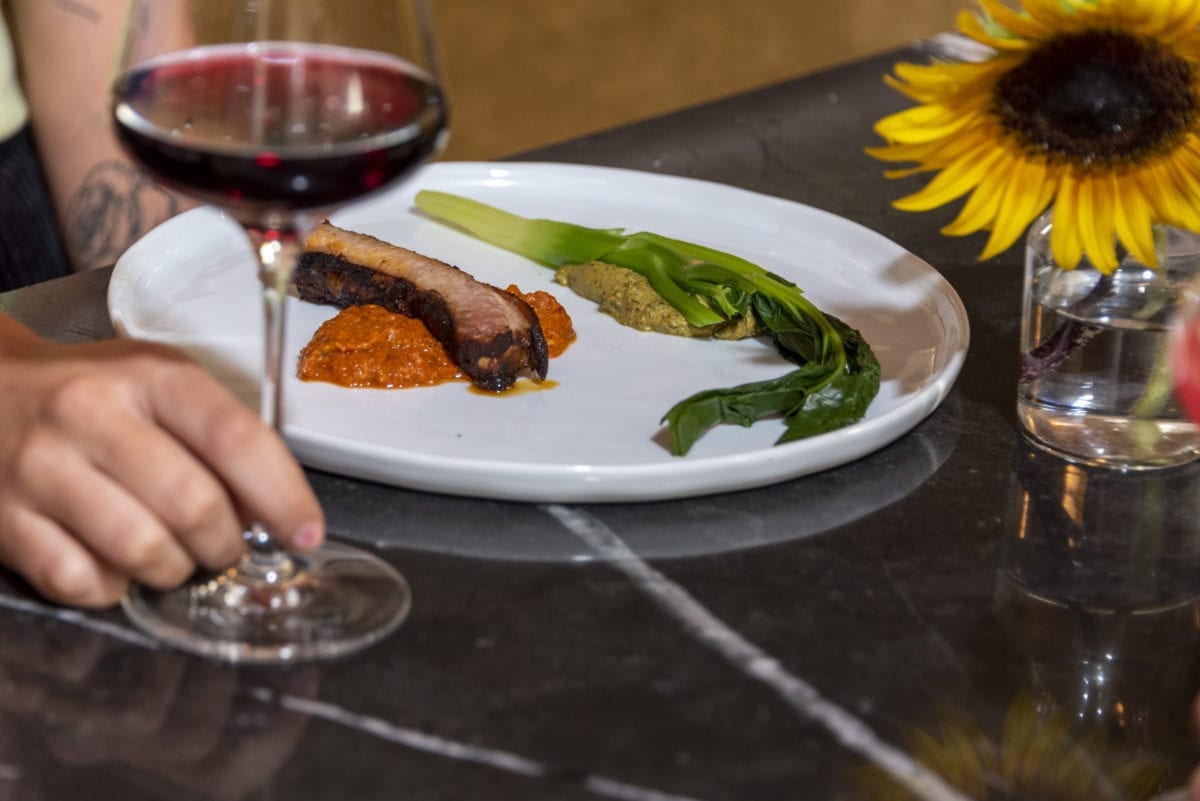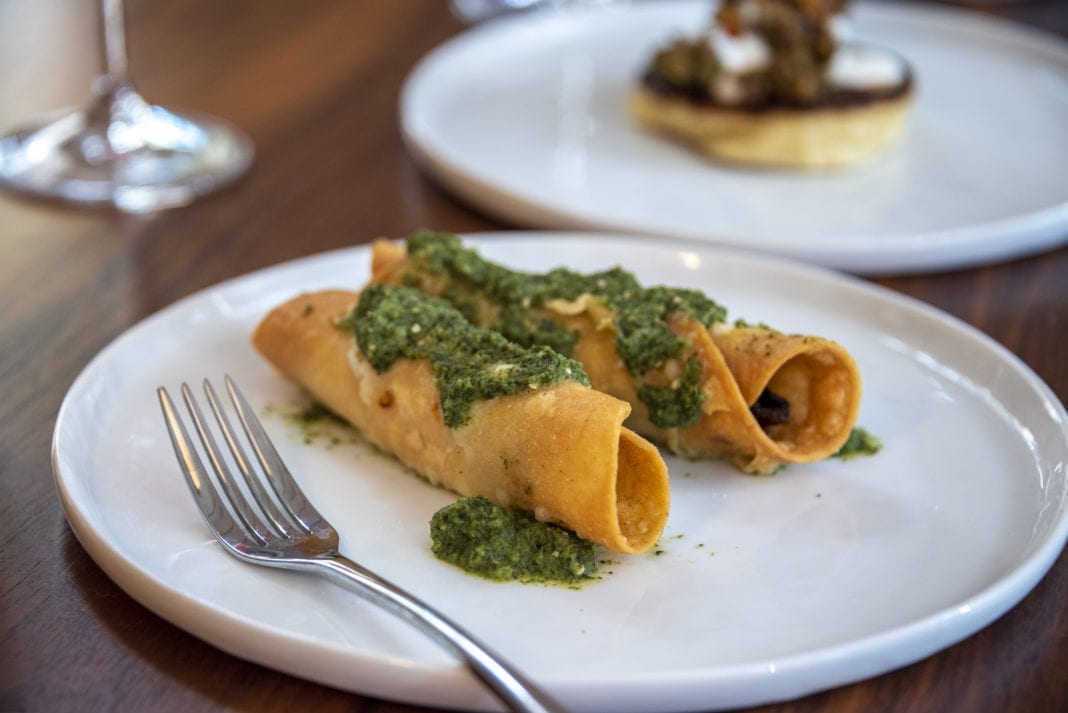An amalgam of events aligned to create the bustling Vintage Wine Bar in downtown Tulsa.
A brilliant high school physics teacher, Colin Sato, put his career on hold to become a chef. He walked into one of the city’s top restaurants unannounced and started work as a line cook the next morning.
A young bartender, Matt Sanders, decided to stock a few bottles of an obscure wine at his restaurant gig. Soon after, he was thanked by the vineyard owner for helping to save his struggling business. Sanders decided then that henceforth, he would try to arrange all his business dealings with the end goal of helping people.
A Brooklyn couple, Robert Highsmith and Stefanie Brechbuehler, who were perhaps the most highly sought after interior design team in New York City, decided to take a break from their hectic lives and answer a call to help design a new restaurant concept.
A kindergarten teacher from El Paso, Marco Herrera, then joined his physics teacher friend in this new venture. The pair are now co-chefs at the soaring, spectacular space in Tulsa, designed by the Brooklyn couple and owned by the altruistic former bartender.
When guests arrive for one of Vintage Wine Bar’s memorable seven-course dinners, their temperatures are checked at the door and they’re led to a cozy spot on plump couches, designed to complement the peach-pink walls that, together with the brass globe lights and long bar, evoke Tulsa’s Art Deco roots. These arriving guests are doubtlessly dazzled by the warm welcome and delighted by the competitive prices – the whole meal is under $50 – both of which reflect Sanders’ strong desire to never appear pretentious.
“You may be drinking a fabulous wine,” he says, “but you’re also drinking a beverage made by farmers in overalls, so it’s nothing to be snobby about. And I want to be the guy who lets the world appreciate that farmer’s creation.”

The diners, however, are probably unaware of the long line of choices and coincidences that were necessary to bring this restaurant into being (and here, let us tip our hat to the contributions of the other partners and building owners Mark Perkins, Jessica Bond and James Sherrod), and of the immense amount of work that goes into each menu.
“We’re obsessed with food, we’re obsessed with cooking, and we talk about it constantly,” says Herrera.
“One of our strengths is research and new ideas,” agrees Sato, who came to Tulsa as part of Teach for America and never left.
Another one of Sato’s strengths? His obsessive focus.
“I don’t get tired of repetition, and I don’t get tired of doing things the right way,” he says.
To decide the best temperature for cooking a pot de creme, he made a batch at 160 degrees, then one at 160.5 degrees, then one at 161 degrees … until, after over twenty repetitions, he finally determined that the best temperature was 170.5. He does an approximation, then varies it subtly, tirelessly, endlessly, until after weeks and weeks of iterations, he has created the perfect recipe.
“I don’t know anyone else who works as hard as Colin,” says Sanders.
All of this makes Sato sound robotic, but in reality, it’s just the opposite; he’s as passionate as they come.

“Everyone has memories with deep feelings that revolve around food,” he says. “I more than most. I try to recreate these memories so that others can experience it. My father is Japanese, and sometimes on a cold winter day, he would make nabe, a kind of Japanese hot pot. One of my most cherished memories is the joy of eating that nabe with my family. I’ve sometimes cooked nabe in Tulsa to let them feel what I feel, to share this joy with others.”
Fortunately, Sato has a rich panoply of experiences to draw from. His mother helped the poor, especially immigrants, and at any given time they usually had a family of refugees staying with them until they could strike out on their own.
“And we always learned how those people cooked,” says Sato. “One Mexican family of five lived with us for months, and so we learned Mexican food. Perogies? I can cook that because an elderly Polish lady once lived with us. In my family, instead of birthday presents, you got to request a birthday meal – nabe, soba, perogies, whatever you wanted. Those were some of the happiest times of my life.”
No matter the occasion or theme, the culinary team is consistently collaborating.
“Colin and I have the best creative relationship; we’re constantly talking new ideas,” says Herrera.
And here he comes now, bringing one of the courses of the Mexican dinner to the couple who just arrived.
“This tortillita de tamal is a pancake made of dehydrated masa,” he tells them. “It’s topped with green chorizo and crema. We were poor growing up in El Paso, and my grandmother, who comes from Michoacan, used to make these pancakes for us. I like them so much that I serve them to the whole kitchen sometimes as a snack.”























